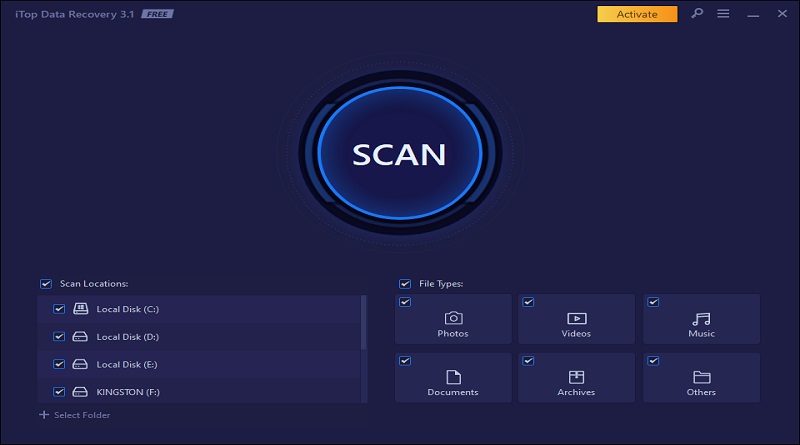What Is Zero Trust & Its Core Principles in Cybersecurity?

From intruding on critical business operations to hijacking employee credentials and manipulating data management systems, cybercrime incidences are rising more than ever.
Compromised data security can impact a brand’s ROI and credibility in the long term.
In fact, reports state that a business can go offline for 22 days because of a cyberattack.
This can lead to revenue losses of $10,000 per hour for small businesses to over $5 million per hour for medium and large-scale enterprises.
What’s worse?
The lack of cybersecurity measures can dent a healthy customer-brand relationship.
The solution?
Implementing a zero-trust security model can help businesses protect their valuable confidential data from malicious cyberattacks. This can keep the brand’s credibility intact in the long term.
In this post, we will discuss the concept of zero trust and its core principles in cybersecurity.
Let’s get started.
What Is Zero Trust?
Zero trust is a modern cybersecurity approach.
It enables businesses to secure employee/customer data, devices, applications, and data integrations on networks, including internal networks, cloud, and public or untrusted (zero trust) sources.
This cybersecurity framework works on the principle of “verify, never trust.”
Unlike the conventional “castle-and-moat” cybersecurity strategy that assumes everything (network, data, users, etc.) is safe, zero trust focuses on verifying cyber assets before granting access.
It involves analyzing and identifying protection surfaces, such as operating systems, applications, web servers, and other assets that can serve as entry points for cybercriminals.
Next, it breaks down these assets into several security zones comprising security policies, data access permissions, and more.
Once it’s done, the zero-trust strategy involves implementing multiple authentication methods to ensure the cyber assets are safe.
The users, cyber assets, and networks should pass through all the security checks to access the internal data resources.
Key Drivers of the Zero-Trust Model
Several cyberattack incidents depict how hackers exploit personal devices to intrude into the company’s database.
The recent cyberattack incident on Uber’s database is proof of it.
Hackers attacked one of their employee’s devices and stole information on 77,000 Uber team members and crucial reports.
Bring-your-own-device (BYOD) policies and the inception of a hybrid work culture are the key reasons that have impacted cybersecurity protocols.
So, companies need a robust cybersecurity approach like zero trust to ensure complete data security regardless of devices, apps, and other cyber asset integrations.
Here are a few more crucial drivers of the zero-trust model.
- Evolving integration of apps, services, and data with partners, customers, and others.
- Advancing technologies like hybrid cloud, software as a service (SaaS), edge computing, and others.
- Evolving regulatory needs based on cultural and geopolitical forces, etc.
4 Core Principles of Zero-Trust Framework in Cybersecurity
Here are the four core principles of the zero-trust framework that can help businesses ensure its successful implementation.
#1: Identify and Analyze the IT Protection Surfaces
As discussed, the first principle of the zero-trust framework is to identify the protection points.
So, identify IT protection surfaces, including devices, applications, services, data, users, and more. This practice can help analyze and secure the entry points for hackers.
However, manual analysis of cyber assets is a tedious and time-consuming task.
Pro Tip: Implement a state-of-the-art cyber asset attack surface management (CAASM) system. It provides a complete view of all the crucial cyber assets with a few clicks.
Deploying CAASM can help your security teams detect potential vulnerabilities. They can gain 360-degree visibility into IT infrastructure and ensure best practices.
Leverage these insights to improve cybersecurity, especially the entry points for cybercriminals.
#2: Check and Update the Existing Cybersecurity Controls
Once you map the IT protection surfaces, analyze the existing cybersecurity controls.
The reason?
Often, businesses have advanced security tools and technologies that can help them implement the zero-trust strategy.
Similarly, they can have outdated tools that need updating or complete elimination from the system.
This analysis can help review and strengthen existing security controls, a crucial aspect of the zero-trust framework.
Pro Tip: Compromised credentials are one of the leading reasons for data breaches. So, conventional authentication based on passwords and user names can no longer suffice.
Deploy multi-factor authentication (MFA) software.
It ensures user account security by requiring them to prove their unique identity in a couple of ways before accessing the system data.
For instance, besides the password, MFA software might ask the users to –
- Enter a secret code sent to the email.
- Scan a fingerprint.
- Answer a personal security question.
Users should pass this security check to get access to the system.
#3: Outline Detailed Policies for Strict Verification
The zero-trust framework allows access after verification, when necessary. It works on the principle of providing least-privilege access for every session.
So, create strict internal policies reflecting the same.
Mention the devices and applications users can access with the necessary permissions and other conditions.
Once these role-based access policies are in place, security teams can configure devices and applications that adhere to them.
This can ensure that no data is prone to unauthorized access.
The system will automatically deny unauthorized access when a device, application, or user tries to log in.
#4: Monitor the Procedures and Tools Consistently
The zero-trust model requires continuous monitoring of the implemented tools and procedures.
This allows businesses to identify and address security gaps at the right time.
The result?
The security teams can make timely, strategic, and informed decisions to prevent cyber threats
Pro Tip: Establish an end-to-end data monitoring system to detect and address cyber threats.
It consistently analyzes the data within applications and other resources to ensure high data quality standards.
Leverage this solution to maintain cybersecurity and earn the trust of partners, customers, and internal teams.
Conclusion
Deploying a zero-trust architecture can drive security excellence for all firms – small, medium, or large.
It ensures all users (outside or inside the firm) are verified, authenticated, and monitored for security.
This can help prevent malicious cyberthreats from impacting a firm’s ROI and credibility.
No wonder, American President Joe Biden’s administration announced taking a zero-trust-based cybersecurity approach. Considering the increasing cyberattacks, the US government will leverage this model to combat them.
The four core principles and cybersecurity practices shared in this post can help you build a solid zero-trust framework. Deploy this strategy to protect your organization from the growing cyberattack episodes.
Author Bio
Carl Torrence is a Content Marketer at Marketing Digest. His core expertise lies in developing data-driven content for brands, SaaS businesses, and agencies. In his free time, he enjoys binge-watching time-travel movies and listening to Linkin Park and Coldplay albums.
Carl can be reached online on LinkedIn and Twitter.
Also read: What are the Best Cybersecurity Practices to Protect Your Small Business?





